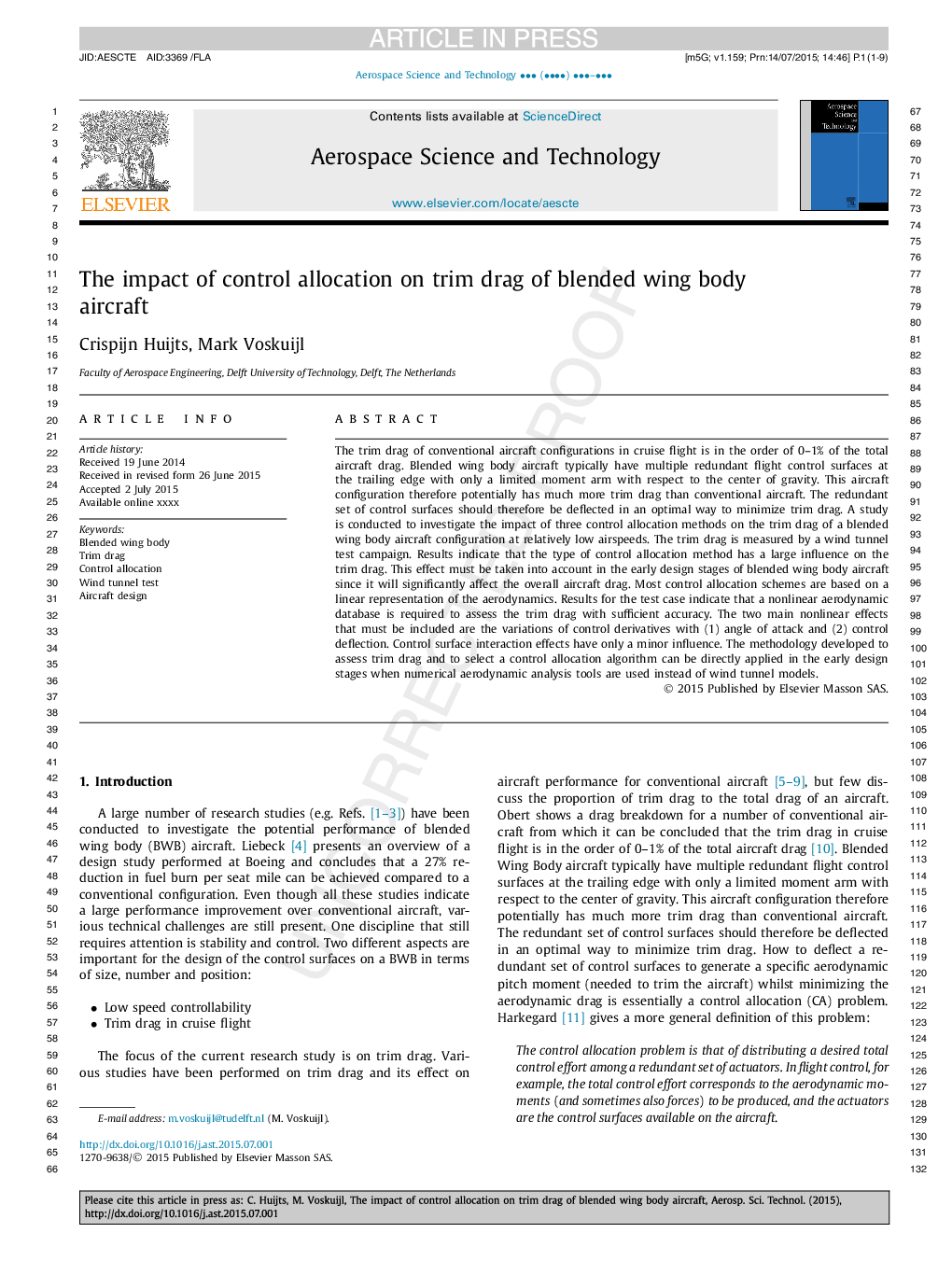| Article ID | Journal | Published Year | Pages | File Type |
|---|---|---|---|---|
| 8058806 | Aerospace Science and Technology | 2015 | 9 Pages |
Abstract
The trim drag of conventional aircraft configurations in cruise flight is in the order of 0-1% of the total aircraft drag. Blended wing body aircraft typically have multiple redundant flight control surfaces at the trailing edge with only a limited moment arm with respect to the center of gravity. This aircraft configuration therefore potentially has much more trim drag than conventional aircraft. The redundant set of control surfaces should therefore be deflected in an optimal way to minimize trim drag. A study is conducted to investigate the impact of three control allocation methods on the trim drag of a blended wing body aircraft configuration at relatively low airspeeds. The trim drag is measured by a wind tunnel test campaign. Results indicate that the type of control allocation method has a large influence on the trim drag. This effect must be taken into account in the early design stages of blended wing body aircraft since it will significantly affect the overall aircraft drag. Most control allocation schemes are based on a linear representation of the aerodynamics. Results for the test case indicate that a nonlinear aerodynamic database is required to assess the trim drag with sufficient accuracy. The two main nonlinear effects that must be included are the variations of control derivatives with (1) angle of attack and (2) control deflection. Control surface interaction effects have only a minor influence. The methodology developed to assess trim drag and to select a control allocation algorithm can be directly applied in the early design stages when numerical aerodynamic analysis tools are used instead of wind tunnel models.
Related Topics
Physical Sciences and Engineering
Engineering
Aerospace Engineering
Authors
Crispijn Huijts, Mark Voskuijl,
